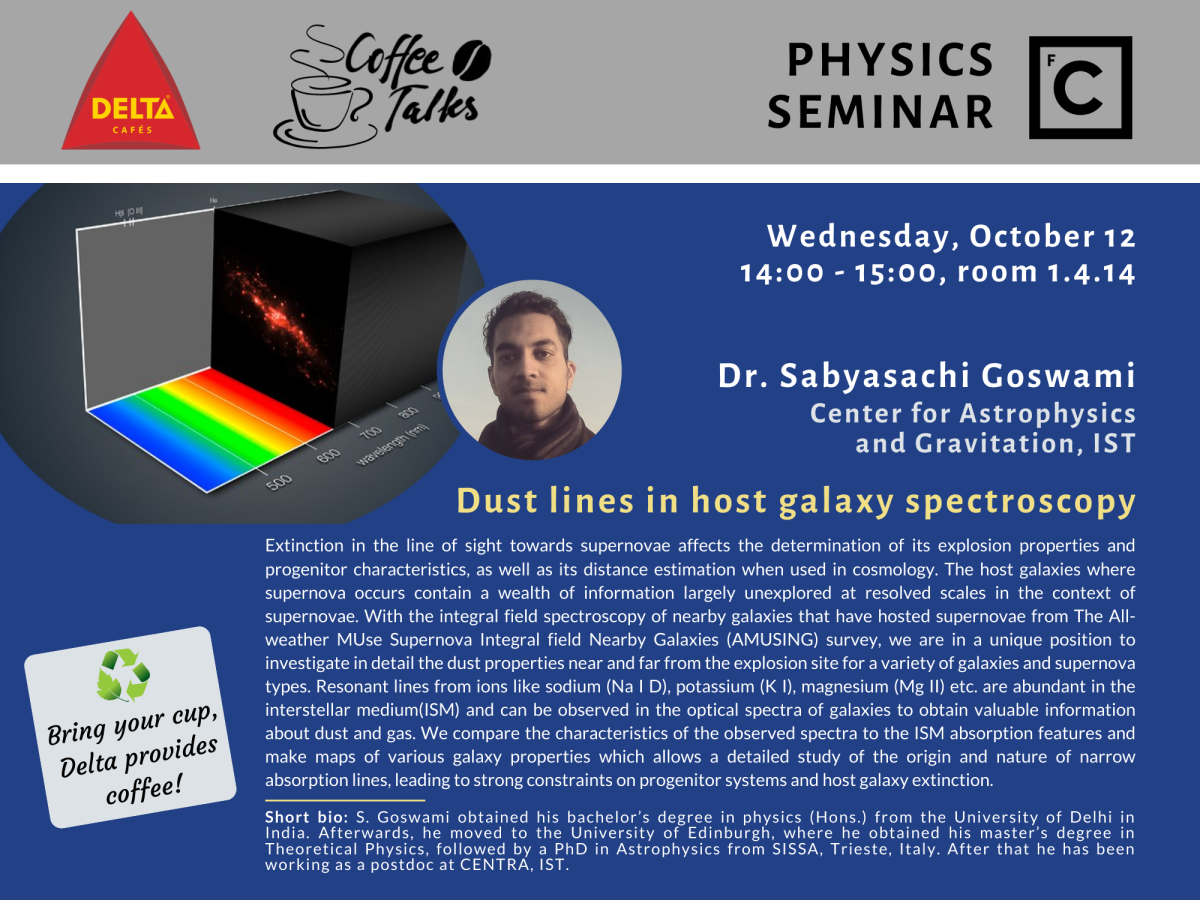Por Sabyasachi Goswami (Center for Astrophysics and Gravitation, Instituto Superior Técnico).
Extinction in the line of sight towards supernovae affects the determination of its explosion properties and progenitor characteristics, as well as its distance estimation when used in cosmology. The host galaxies where supernova occurs contain a wealth of information largely unexplored at resolved scales in the context of supernovae. With the integral field spectroscopy of nearby galaxies that have hosted supernovae from The All-weather MUse Supernova Integral field Nearby Galaxies (AMUSING) survey, we are in a unique position to investigate in detail the dust properties near and far from the explosion site for a variety of galaxies and supernova types. Resonant lines from ions like sodium (Na I D), potassium (K I), magnesium (Mg II) etc. are abundant in the interstellar medium(ISM) and can be observed in the optical spectra of galaxies to obtain valuable information about dust and gas. We compare the characteristics of the observed spectra to the ISM absorption features and make maps of various galaxy properties which allows a detailed study of the origin and nature of narrow absorption lines, leading to strong constraints on progenitor systems and host galaxy extinction.
Short bio: S. Goswami obtained his bachelor’s degree in physics (Hons.) from the University of Delhi in India. Afterwards, he moved to the University of Edinburgh, where he obtained his master’s degree in Theoretical Physics, followed by a PhD in Astrophysics from SISSA, Trieste, Italy. After that he has been working as a postdoc at CENTRA, IST.


